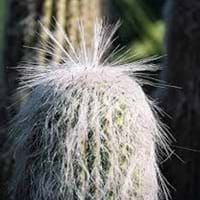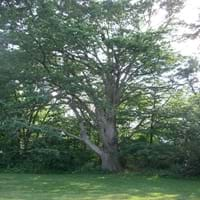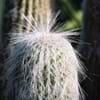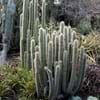Life Span
Perennial
Perennial
Type
Cactus or Succulent
Tree
Origin
Mexico
North America, United States, Northeastern United States, Mid-Atlantic United States, Central United States, South-Central United States, Texas, Mexico
Types
Not Available
Not Available
Habitat
Dry areas, Forest margins, gardens, Semi arid regions, Semi desert
Forests, Ridges, Rocky areas
USDA Hardiness Zone
11-15
4-8
Sunset Zone
H1, H2, 21, 22, 23, 24
2a, 2b, 3a, 3b, 4, 5, 6, 7, 8, 9, 10, 11, 12, 14, 15, 16, 17
Habit
Narrow Upright/Fastigiate
Oval or Rounded
Flower Color
Pink
Red, Light Green, Chartreuse
Flower Color Modifier
Not Available
Bicolor
Fruit Color
Light Pink
Brown
Leaf Color in Spring
White
Green, Yellow green
Leaf Color in Summer
White
Dark Green
Leaf Color in Fall
White
Yellow, Orange
Leaf Color in Winter
White
Not Available
Leaf Shape
Funnel shaped
Lobed
Plant Season
Spring, Summer, Fall, Winter
Spring, Summer, Fall
Sunlight
Full Sun
Full Sun
Growth Rate
Very Slow
Slow
Type of Soil
Loam, Sand
Clay, Loam
The pH of Soil
Acidic, Neutral, Alkaline
Neutral, Alkaline
Soil Drainage
Well drained
Well drained
Bloom Time
Late Spring, Early Summer, Summer
Spring, Late Spring
Tolerances
Drought
Pollution, Salt
Where to Plant?
Container, Ground, Pot
Ground
How to Plant?
Seedlings, Stem Planting, Vegetative Reproduction
Seedlings, Stem Planting
Plant Maintenance
Medium
Low
Watering Requirements
Average Water Needs, Do Not over Water, Water when soil is dry
Do Not over Water, Never Over-water, Requires regular watering
In Summer
Lots of watering
Lots of watering
In Spring
Moderate
Moderate
In Winter
Average Water
Average Water
Soil pH
Acidic, Neutral, Alkaline
Neutral, Alkaline
Soil Type
Loam, Sand
Clay, Loam
Soil Drainage Capacity
Well drained
Well drained
Sun Exposure
Full Sun
Full Sun
Pruning
Remove damaged leaves, Remove dead branches, Remove dead leaves
Remove damaged leaves, Remove dead leaves, Remove dead or diseased plant parts, Remove hanging branches
Fertilizers
All-Purpose Liquid Fertilizer
Fertilize the first year, No need to fertilize every year
Pests and Diseases
Red blotch
Insects, Red blotch
Plant Tolerance
Drought
Salt
Flowers
Showy
Insignificant
Flower Petal Number
Not Available
Not Available
Foliage Texture
Bold
Coarse
Foliage Sheen
Matte
Glossy
Attracts
Not Available
Birds
Allergy
Skin irritation
Asthma
Aesthetic Uses
Showy Purposes
Landscape Designing
Beauty Benefits
Not Available
No Beauty Benefits
Environmental Uses
Air purification
Air purification, Amazing growth rate, Food for insects, Nesting sites for birds, No fertilizer, pesticides, or herbicides needed, Prevent Soil Erosion
Medicinal Uses
Not Available
No Medicinal Use
Part of Plant Used
Bulbs, Hair
Tree trunks
Other Uses
Hair is used in making sweaters, Showy Purposes
Air freshner, Application in Furniture, Economic Purpose, Used as firewood, Used in construction, Used in pulpwood and lumber production, Wood is used for making furniture, Wood is used fore making tools, Wood is used in construction
Used As Indoor Plant
Yes
No
Used As Outdoor Plant
Yes
Yes
Garden Design
Container, Feature Plant, Houseplant, Rock Garden, Wall
Feature Plant, Shade Trees
Botanical Name
CEPHALOCEREUS senilis
QUERCUS muehlenbergii
Common Name
Bunny Cactus
White Persian Cat cactus
Chinkapin Oak, Yellow Chestnut Oak
In Hindi
ओल्ड मैन कैक्टस
Chinkapin ओक
In German
Old Man Cactus
chinkapin Oak
In French
Old Man Cactus
chinkapin Oak
In Spanish
Viejo Cactus
chinkapin Roble
In Greek
Γέρος Cactus
Chinkapin Oak
In Portuguese
Old Man Cactus
carv Oak
In Polish
Stary Cactus
Chinkapin Oak
In Latin
Senem Cactus
Oak Chinkapin
Phylum
Tracheophyta
Tracheophyta
Class
Magnoliopsida
Magnoliopsida
Order
Caryophyllales
Fagales
Family
Cactaceae
Fagaceae
Genus
Cephalocereus
Quercus
Clade
Angiosperms, Core eudicots, Eudicots
Angiosperms, Eudicots, Rosids
Tribe
Pachycereeae
Not Available
Subfamily
Cactoideae
Quercoideae
Number of Species
Not Available
Not Available
Season and Care of Old Man Cactus and Chinkapin Oak
Season and care of Old Man Cactus and Chinkapin Oak is important to know. While considering everything about Old Man Cactus and Chinkapin Oak Care, growing season is an essential factor. Old Man Cactus season is Spring, Summer, Fall and Winter and Chinkapin Oak season is Spring, Summer, Fall and Winter. The type of soil for Old Man Cactus is Loam, Sand and for Chinkapin Oak is Clay, Loam while the PH of soil for Old Man Cactus is Acidic, Neutral, Alkaline and for Chinkapin Oak is Neutral, Alkaline.
Old Man Cactus and Chinkapin Oak Physical Information
Old Man Cactus and Chinkapin Oak physical information is very important for comparison. Old Man Cactus height is 460.00 cm and width 30.00 cm whereas Chinkapin Oak height is 1,220.00 cm and width 1,520.00 cm. The color specification of Old Man Cactus and Chinkapin Oak are as follows:
Old Man Cactus flower color: Pink
Old Man Cactus leaf color: White
Chinkapin Oak flower color: Red, Light Green and Chartreuse
- Chinkapin Oak leaf color: Green and Yellow green
Care of Old Man Cactus and Chinkapin Oak
Care of Old Man Cactus and Chinkapin Oak include pruning, fertilizers, watering etc. Old Man Cactus pruning is done Remove damaged leaves, Remove dead branches and Remove dead leaves and Chinkapin Oak pruning is done Remove damaged leaves, Remove dead leaves, Remove dead or diseased plant parts and Remove hanging branches. In summer Old Man Cactus needs Lots of watering and in winter, it needs Average Water. Whereas, in summer Chinkapin Oak needs Lots of watering and in winter, it needs Average Water.





